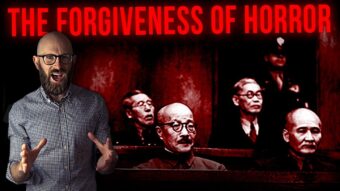“Unraveling the Mystery: Why Italy Escaped a Post-War Reckoning for Its Atrocities”
What do you think of when you hear the word “Nuremberg”? It probably conjures images of stern judges, war criminals in the hot seat, and the grim business of justice. But wait—have you ever considered why that infamous courtroom drama didn’t extend its spotlight to Italy, the oft-forgotten third member of the Axis Powers? As we sift through history, we realize that Italy’s past under Mussolini isn’t merely a quirky footnote or a lighthearted subplot. Nope, the Italian military and fascist forces were involved in brutal war crimes that often get swept under the rug, like an old pizza box you forgot about in the fridge.
So, why did the last act of justice avoid our Italian friends entirely, leaving them with no “Italian Nuremberg”? Was it a matter of political convenience, a tidy narrative that suited post-war alliances, or perhaps just a case of “who you know”? If you’re ready to unravel the complicated web of war crimes, political maneuvering, and historical quirks that led to this gaping void in justice, then let’s dig in…
To understand this intriguing chapter, we’ll start with a brief look at crimes committed that often go unmentioned. LEARN MORE
 From October 1945 to October 1948, almost 1,700 Nazi officers and officials underwent the famous Nuremberg trials, charged with committing war crimes, crimes against peace and crimes against humanity. The trials resulted in 200 death sentences, while 279 defendants were to serve life prison terms. Similar trials for similar charges were conducted in Tokyo, from April 1946 to November 1948, bringing to account 28 defendants among the militaristic leadership of Imperial Japan, though for various reasons of benefit to the United States, massive efforts were put in place to make sure the imperial family were not only absolved of any wrong doing, but a major propaganda campaign put in place to give the false impression to the rest of the world that the imperial family had been mere puppet leaders, instead of actively in charge and well aware of the the extreme atrocities as was actually the case. The U.S. also not only absolved the physicians and scientists in charge of the extreme atrocities committed in research facilities like Unit 731, but also paid money for some of their files because they wanted the research that the mass murderers had done on human subjects as it was much more scientifically conducted than the Naziâs own data, and was thus deemed to be potentially useful in the upcoming potential conflict with the Soviets. See our unsurprisingly age restricted two hours documentary: Swept Under the Rug: The Truth About the Japanese Holocaust, in which we dive into all of that, as well as the shocking number of atrocities the Allies committed in the Pacific theater as well that is likewise generally swept under the rug today. As a little brief aside of that tale, you know when the card carrying Nazi comes out as arguably the greatest hero of the entire story in the Pacific Theater, something has gone very wrong on all sides.
From October 1945 to October 1948, almost 1,700 Nazi officers and officials underwent the famous Nuremberg trials, charged with committing war crimes, crimes against peace and crimes against humanity. The trials resulted in 200 death sentences, while 279 defendants were to serve life prison terms. Similar trials for similar charges were conducted in Tokyo, from April 1946 to November 1948, bringing to account 28 defendants among the militaristic leadership of Imperial Japan, though for various reasons of benefit to the United States, massive efforts were put in place to make sure the imperial family were not only absolved of any wrong doing, but a major propaganda campaign put in place to give the false impression to the rest of the world that the imperial family had been mere puppet leaders, instead of actively in charge and well aware of the the extreme atrocities as was actually the case. The U.S. also not only absolved the physicians and scientists in charge of the extreme atrocities committed in research facilities like Unit 731, but also paid money for some of their files because they wanted the research that the mass murderers had done on human subjects as it was much more scientifically conducted than the Naziâs own data, and was thus deemed to be potentially useful in the upcoming potential conflict with the Soviets. See our unsurprisingly age restricted two hours documentary: Swept Under the Rug: The Truth About the Japanese Holocaust, in which we dive into all of that, as well as the shocking number of atrocities the Allies committed in the Pacific theater as well that is likewise generally swept under the rug today. As a little brief aside of that tale, you know when the card carrying Nazi comes out as arguably the greatest hero of the entire story in the Pacific Theater, something has gone very wrong on all sides.











